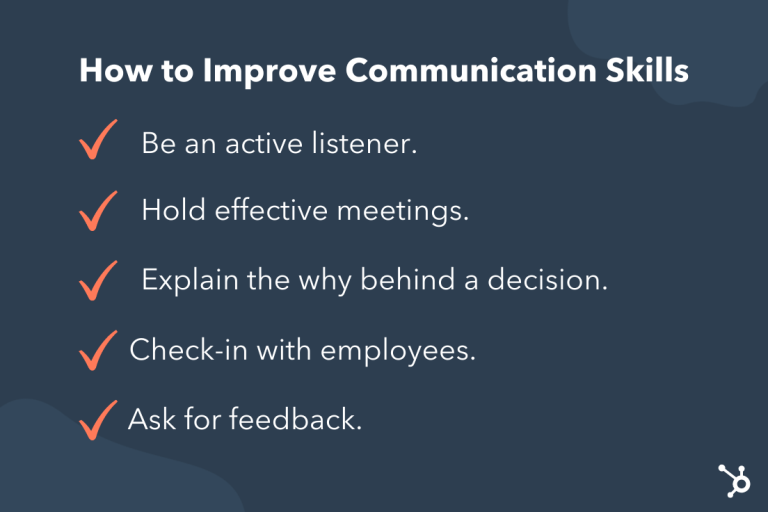How to Overcome Physical Barriers to Communication
To overcome physical barriers to communication, utilize non-verbal cues and gestures when possible. One can also utilize technology to bridge the gap and make communication more accessible.
Physical barriers, such as distance or hearing impairments, can be overcome with creative solutions and the use of appropriate tools and techniques. By implementing these strategies, individuals can enhance communication and ensure that messages are effectively transmitted and received. Effective communication is essential in both personal and professional relationships, and overcoming physical barriers is crucial to fostering strong connections and understanding.

Credit: www.cdc.gov
Barrier 1: Noise And Distractions
Physical barriers to communication can hinder the smooth flow of information. One significant barrier is noise and distractions. To overcome this, start by identifying the sources of noise and distractions. Whether it’s loud machinery or a chatty coworker, pinpointing the cause can help in finding solutions.
Minimizing noise disruptions can be achieved through soundproofing measures or relocating to a quieter space. Techniques such as using noise-cancelling headphones or implementing a “quiet hours” policy can also be effective. Handling distractions effectively involves staying focused on the conversation or task at hand.
Implementing strategies like turning off notifications on electronic devices or creating a dedicated work area can help to minimize distractions and improve communication. By addressing noise and distractions, individuals can overcome physical barriers to communication and ensure clearer and more effective interactions.
Barrier 2: Distance And Location
Physical barriers to communication often include distance and location, posing challenges for effective interaction. Long distances can create problems, hindering communication flow. Thankfully, there are tools and strategies available for remote communication, making it easier to connect despite being far apart.
Selecting appropriate locations is vital to ensure smooth and uninterrupted communication. By considering factors like noise level, privacy, and accessibility, communication can be enhanced. Whether it’s utilizing video conferencing software or choosing a quiet meeting room, these practical solutions help overcome physical barriers to communication.
Effective remote communication and proper location selection play significant roles in fostering clear and efficient interaction, enabling teams to work together seamlessly, regardless of the distance and location.
Barrier 3: Physical Disabilities And Impairments
Overcoming physical barriers to communication requires understanding different types of physical disabilities. By adapting communication methods, we can ensure inclusivity and accessibility for those with impairments. It’s essential to be aware of various conditions such as hearing or vision loss, mobility restrictions, or speech impairments.
For individuals with hearing loss, using sign language interpreters or providing written communication can be helpful. For those with visual impairments, using braille or audio formats is essential. Additionally, accommodating mobility restrictions with ramps or alternative communication devices is crucial.
Promoting inclusivity and accessibility in communication means creating an environment where everyone can participate and understand effectively. Remember, our goal is to facilitate communication for all individuals, regardless of their physical disabilities or impairments. By doing so, we can enhance understanding and bridge the gap in effective communication.
Frequently Asked Questions On How To Overcome Physical Barriers To Communication
How We Can Overcome Physical Barriers Of Communication?
To overcome physical barriers of communication, we can utilize certain strategies. One effective way is to make use of technology tools like video conferencing and instant messaging to connect with others remotely. This bridges the gap created by distance. Another approach is to enhance nonverbal communication through the use of gestures and facial expressions.
This helps convey messages clearly, even without being physically present. Additionally, visual aids such as charts and diagrams can make complex information easier to understand. Creating a conducive environment is important too, as it can help minimize distractions and improve clarity.
Lastly, adapting communication styles to suit the needs of the audience can facilitate better understanding. By implementing these strategies, we can overcome physical barriers and ensure effective communication.
What Are The Physical Barriers In Communication?
Physical barriers in communication refer to obstacles that hinder the effective exchange of information between individuals or groups. These barriers are related to the environment and the medium through which communication takes place. Examples of physical barriers include distance, noise, and visual distractions.
Distance can limit face-to-face communication, while excessive noise can make it difficult for individuals to hear and understand each other. Visual distractions, such as poor lighting or cluttered spaces, can also impede clear communication. These physical barriers can disrupt the flow of information and lead to misunderstandings or misinterpretations.
To overcome these challenges, it is important to create conducive communication environments, minimize distractions, and use suitable communication tools and technologies. Understanding and addressing physical barriers can help facilitate effective and efficient communication.
How To Overcome Physical Barriers In Health And Social Care?
To overcome physical barriers in health and social care, there are a few key strategies to consider. First, it is important to ensure that facilities and environments are designed to be accessible for individuals with physical limitations. This can include things like ramps, elevators, and handrails.
Second, healthcare professionals should receive training on how to properly communicate and interact with individuals who have physical disabilities. This can involve techniques such as using clear and simple language, providing visual aids, and offering additional time for appointments. Third, assistive devices and technologies can be employed to help individuals overcome physical barriers.
This may include devices like wheelchairs, hearing aids, or communication tools. By implementing these strategies, the physical barriers in health and social care can be effectively addressed, allowing individuals with physical limitations to receive the support and care they need.
What Are Some Strategies To Overcome The Barriers?
To overcome barriers, adopt clear communication, active listening, and empathy. Break down complex topics into simpler concepts. Encourage two-way dialogue to ensure both parties are heard. Seek feedback and incorporate it into your approach. Use visuals or demonstrations to enhance understanding.
Foster a positive and open-minded environment that promotes collaboration. Remain flexible and open to new ideas and perspectives. Practice patience and tolerance to create a supportive atmosphere where all individuals feel comfortable expressing their thoughts and concerns. Establish clear goals and provide necessary resources to overcome any challenges.
Regularly evaluate progress and adjust strategies as needed. Emphasize teamwork and cooperation to build strong relationships and trust among team members. Provide coaching and training opportunities to enhance skills and knowledge. By implementing these strategies, you can effectively overcome barriers and drive success.
Conclusion
Overcoming physical barriers to communication is crucial for effective and inclusive interactions. By understanding and addressing these barriers, individuals can promote understanding, empathy, and collaboration. Cultivating active listening skills enables us to comprehend not only what is said, but also the body language and non-verbal cues that may be utilized as alternative forms of expression.
Moreover, employing technology and assistive devices can bridge the gap for those with hearing impairments, speech disorders, or mobility limitations. Additionally, creating an accessible physical environment by providing ramps, elevators, and sight guides ensures that everyone can participate in conversations comfortably.
It is essential to foster an inclusive mindset, valuing diversity and promoting accessibility, so that individuals with physical challenges are not hindered from participating fully in communication. By breaking down physical barriers, we can embrace a more inclusive and connected world.




